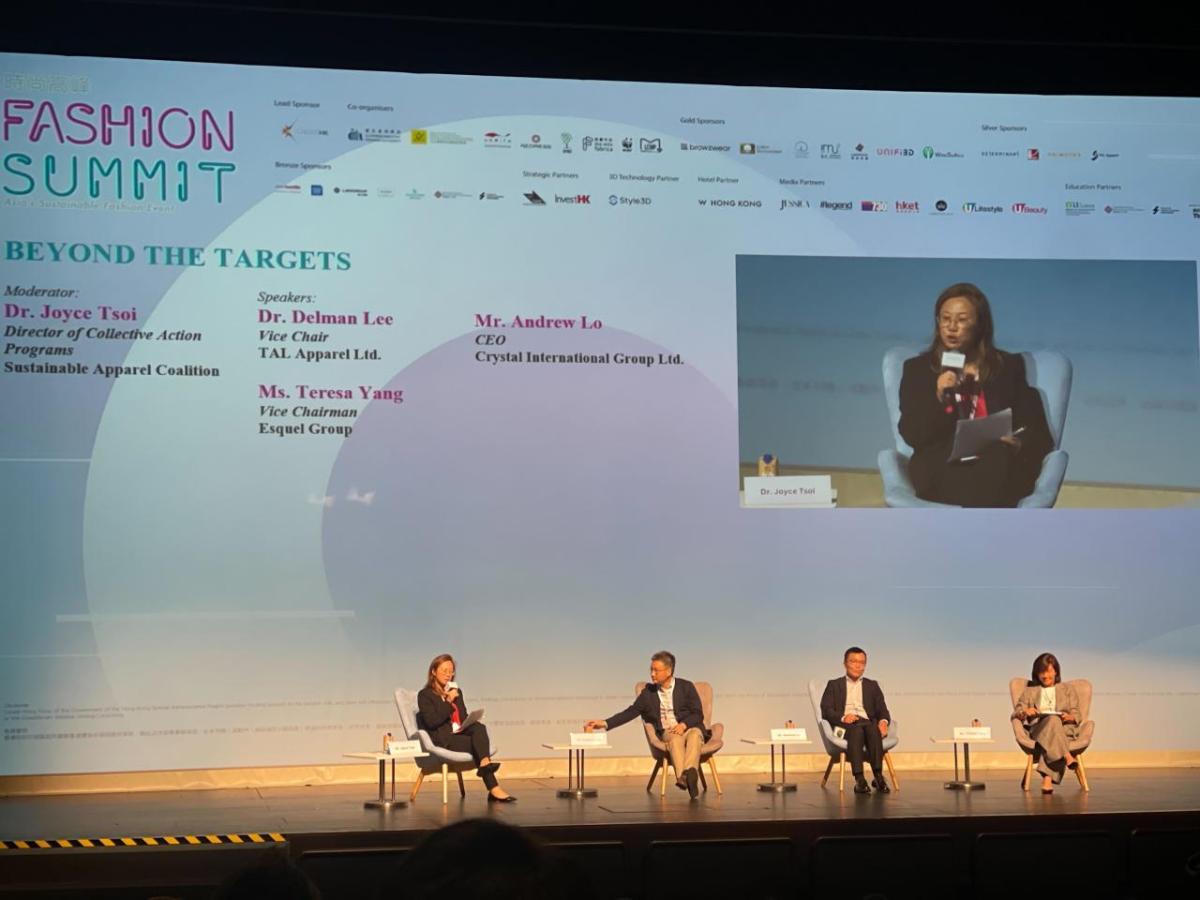
Sustainable Apparel Coalition Discusses“Actions To The Sustainability Journey” At Fashion Summit Hong Kong
Lardeau initially shared background information about the SAC, the global multi-stakeholder nonprofit alliance that represents a diverse global membership of over 280 members – about 50% of the apparel and textile industry – in 36 countries. Lardeau explained that over the past two years, the organization has seen the greatest amount of growth, demonstrating the collaborative momentum of the industry coming together to address systemic challenges and co-develop solutions with an approach based in equal partnership.
Lardeau explored how the SAC's work is anchored by the Higg Index, a suite of tools that measures social and environmental impact through five core tools based in three key categories: two Higg Product Tools and three Higg Facility Tools.“Developed in collaboration with our members, and employed throughout the decade as working tools achieving measurable sustainability goals, the Higg Index stands today as the leading example of end-to-end sustainability measurement index, for any industry,” Lardeau said.“These tools have matured into comprehensive, robust offerings ready to scale and form a template for our industry's pursuit of impact improvements. Nonetheless, they will continue to evolve, as science improves and our understanding of the industry's challenges deepen, allowing us to support our members and the industry.”
He then shared examples of how the tools serve the industry:
- In collaboration with the World Resources Institute, the SAC leveraged Higg FEM data from nearly 18,000 facilities, and detailed material impact data from Higg MSI, to develop the most detailed apparel industry carbon emissions inventory. This work then helped identify and quantify the key interventions that can achieve a 1.5 degree aligned climate reduction target for the industry. In partnership with Reset Carbon, the SAC used the Higg tools to dig deeper into facility level analysis, showing that of the 18,000 textile facilities that engaged in Higg Facility Environment Management (FEM) assessments, around 1,500 are responsible for 80% of their combined total carbon emissions. These were identified primarily as Tier 2 and laundry facilities located in China, Bangladesh, India, and Turkey. By quantifying the impact of interventions at this cohort of facilities, the data showed that offsite renewable electricity and energy efficiency are the two biggest levers for reducing carbon emissions at scale.
Finally, Lardeau closed with a challenge:“How do we finance, enable and execute these interventions, in a way that is fair and equitable across the value chain partners?” Building on this idea, Joyce Tsoi, SAC's Director, Collective Action Programs, APAC, moderated a panel hosted by the Clothing Industry Training Authority that featured Delman Lee, Vice Chair of TAL Apparel Ltd. and SAC Immediate Past Board Chair, Andrew Lo, CEO of Crystal International Group Ltd., and Teresa Yang, Vice Chairman of Esquel Group.
As initial framing, Tsoi shared that companies around the globe are making bold commitments to combat climate change:. A recent Science Based Target Initiative (SBTi) report shows the highest number of companies set targets on record in 2022 alone than the entire seven years prior. And although an annual 4.2% emissions reduction is required for a 1.5oC alignment for science-based targets, it was found that a typical SBTi-approved company has set even more ambitious goals, with a linear rate of 8.8% scope 1+2 reductions per year. In order to achieve these goals, Tsoi shared, companies will need to secure full organizational support for the company's decarbonization priorities to achieve a just and equitable low carbon transition.
As all three panelists represent companies that have committed to long-term net zero goals by 2050, Tsoi asked questions that allowed them to share the pillars of their climate action programs, how they are incentivizing and empowering staff at all levels to take climate action, and how they are building collaborative ecosystems across organizations, sectors, and value chains to achieve a just and equitable low-carbon transition.

Legal Disclaimer:
MENAFN provides the
information “as is” without warranty of any kind. We do not accept
any responsibility or liability for the accuracy, content, images,
videos, licenses, completeness, legality, or reliability of the information
contained in this article. If you have any complaints or copyright
issues related to this article, kindly contact the provider above.


















Comments
No comment